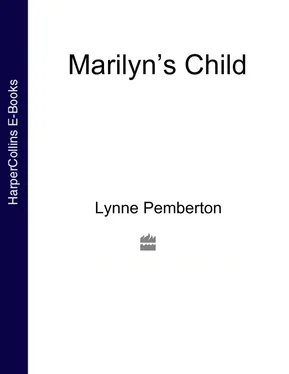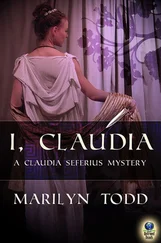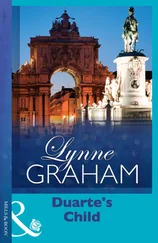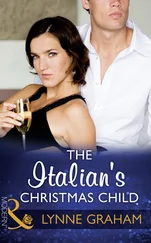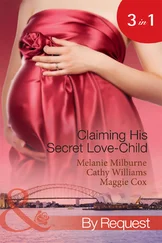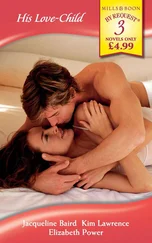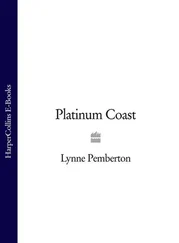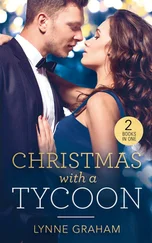I follow Father Steele into the sacristy. When he stops in the centre of the room I stop a couple of feet behind.
He says, ‘Wait here a couple of minutes.’
I nod, and watch him leave by a door on the opposite side of the room. A few minutes later he returns. He’s changed from the chasuble soutane, taken off the amice and alb, and is now dressed simply in a plain black soutane. He’s carrying a small leather bag and a set of keys. Without a word, I follow him out the same way we came in. He locks both doors behind us, and we fall into step side by side down the narrow path that rings the cemetery.
‘It’s a grand morning, Kate.’
‘It is that, Father.’
We both sink into silence once more. I sense he’s feeling a bit like me, unsure and uncomfortable. I wonder why I’m feeling this way; to be sure, I didn’t feel so stupid and tongue-tied the first time I met him in church. I suppose it’s because I’m starting his portrait, something I’ve been looking forward to for three weeks. I want to relax, but the more I try the less it seems to work. My heart is beating faster than normal, banging against my chest, a bit like when I’ve been running, only we’re walking at a leisurely pace. Strange, this feeling, very strange. We continue to walk in silence until eventually I take a deep breath and dare to ask, ‘Where are we going, Father?’
Looking straight ahead, the curate says, ‘To my house. I thought it would be peaceful there. Mrs Flanaghan, the cleaner, doesn’t come in Saturdays, else it wouldn’t be quiet at all … no, not at all.’
I smile, I know Biddy Flanaghan. ‘You’re right there, Father. She can talk the hind legs off a donkey.’
He nods. ‘Two donkeys, or maybe four.’
The talk of Biddy breaks the ice and I feel a bit better.
As we walk up to the front door of Coppice Cottage, the curate’s house, I’m thinking what a sad little place it is. This God-like priest should be living in a dazzling white mansion with long windows and sweeping lawns, something similar to Cashel Manor, the grand Georgian house on the edge of the village. It was built by Lord Anderton’s English ancestors; the po-faced Lady Anderton and her snooty daughter still live there when they aren’t floating around fancy parties in London. According to Angela O’Brian, a girl who used to sit next to me in class, the house has twenty bedrooms (she knew because her mother had cleaned them) and six bathrooms. Mrs O’Brian even had to dust the flowers in every room; not wild flowers – nothing so common – but specially imported flowers from far-flung places, like Casablanca and the Caribbean.
I follow Father Steele into the hall – well, you can’t really call it a hall, more like a passage, grey-walled and narrow with stairs leading straight up to the first floor. He leads the way through a stout wooden door; it’s low and he has to duck. The door opens on to a small square room, which looks a bit like my headmaster’s study at school: lots of books and papers stacked unevenly on groaning bookshelves. A single floor-to-ceiling window overlooks a ragged bandage of untidy lawn broken by a small pond and a couple of fruit trees.
The curate stands facing me in front of the fireplace. The black grate behind his feet is shining, like a shilling up a darkie’s bum, as Lizzy Molloy would say, and so are the brass dishes on the mantel; the desk you can see your face in and the window is gleaming like in the Windolene advert. Biddy has been busy. Above the mantelpiece the Sacred Heart of Jesus drips great globs of scarlet blood, and on the opposite wall the Virgin Mary in a long flowing dress is wearing her ever-present benign smile.
‘So, what’s it to be, Kate: do you want me sitting or standing? Sure, it’s awkward I’m feeling either way.’
‘It’ll be no good, Father, the portrait that is, if you don’t relax. You would do better if you sat or stood somewhere you feel most comfortable.’
With his eyes he indicates a chair in the corner of the room. It’s dark brown leather, with a mass of wrinkles like the hide of a buffalo. Assorted newspapers and religious periodicals are stacked on the seat.
Eyes fixed on the chair, he says, ‘To be honest, I’m not comfortable having my portrait painted, by you or anyone else. Father O’Neill assures me you paint like a young Rembrandt, but I don’t believe him. What training have you had? I haven’t even seen any evidence of your work. Last year you did a watercolour of the church – that’s not exactly portraiture, is it?’
I take a deep breath, then say, ‘I’ve done no less than thirty portraits since I was thirteen. I admit the early stuff of Bridget and Lizzy Molloy isn’t headed for the Louvre, but last year Mother Peter and Mother Superior were both over the moon with theirs, and Mr Lilley, my art teacher, says I’ve got exceptional talent. He’s convinced I’ll get a scholarship to Trinity.’
Still gazing at the chair, he says, ‘That chair belonged to my father. Honest to God, a fairer, more hard-working man never walked this country.’
Tentatively I ask, ‘Is he still alive?’
‘No. Cancer got him in the end. He was only forty-five, no age for a man to die. I was thirteen – you know, that funny age when a boy stops needing his mother so much, and becomes badly in need of a father. I was very angry. I don’t recall ever being so angry before or since. My father always wanted me to be a doctor. “Make something of yourself, Declan,” he’d say, “you’ve got the brain for it.” It wasn’t what I wanted to do, but for his sake I went to Trinity, to medical school, and passed out with flying colours. When I was a junior doctor, a young child in my care died. He was eight years old. I remember sitting by the boy’s bed – Liam was his name – willing him back to life. It was then I turned to God. I was twenty-six. I’ll be thirty in September and there hasn’t been a day since when I haven’t thought about the priesthood.’
Shaking his head he mumbles, ‘Sorry for rambling on, don’t know what got into me.’ Looking directly at me, and pressing a finger to his temple, he repeats, ‘Sorry for rambling, nothing to do with you. Now, where was it you wanted me to sit?’
Unsure of what to say, I quietly begin to take my sketch pad and pencils out of my bag. I use my pencil to point. ‘The chair it is then, Father.’
Father Steele gives me an odd smile before crossing the room to sit in his da’s chair. He takes the pile of journals and dumps them on the floor, then sits down, arranging his gown neatly about his feet. He rakes his fingers through his hair and looks into the middle distance. ‘Is this all right?’
I stand back. The light isn’t good, and his pose is all wrong. He looks like he’s straining to do a stiff shit and is having trouble. I imagine saying this to him, but ask myself how can I even think about saying such a thing to a priest. Then again, why not? Everyone does it, even the Queen of England, and I’m bloody sure it smells to high heaven.
‘The light is not the best, Father. Would it be too much trouble to ask you to pull your chair towards the window?’
With a curt nod he stands up and, making no attempt to hide his impatience, drags the chair in front of the window. Panting, he straightens to his full height. With a deep sigh he says, ‘Here OK?’
Quickly I reply, ‘That’s grand.’ It’s not perfect, but I can see he’s getting edgy and at this rate the hour will be up before I’ve put pencil to paper.
Settled in the seat, he goes through the same ritual of raking and patting his hair, and arranging the folds in his robe.
‘Lift your chin a little, Father, please.’
He obliges with an unwilling shrug.
‘And turn to face the window.’
Читать дальше
